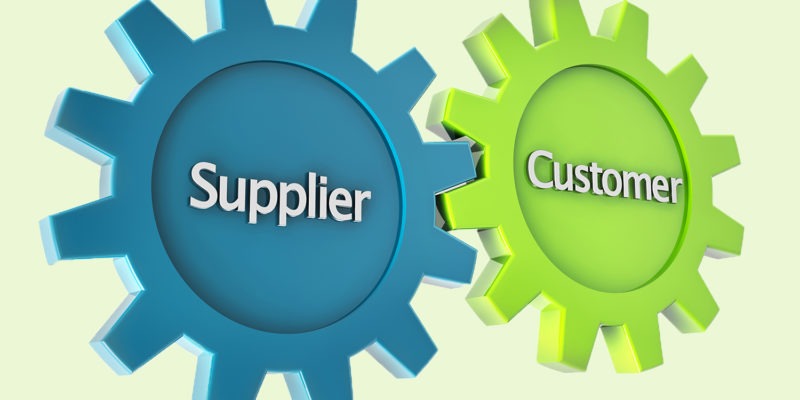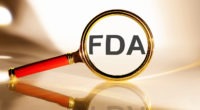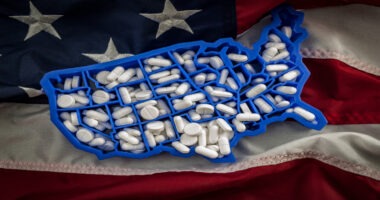Innovation in the Supply Chain: Building Resiliency
Having resilient supply chains is always of great importance, but even more so as customers and suppliers have had to adjust to new challenges in the wake of the pandemic. What are some innovative practices that companies are applying to their supply chain?
Ranking the Top 25 Supply Chains
Supply-chain resiliency and agility are characteristics of companies ranked with the top supply chains according to a recent analysis and ranking by The Gartner Group of the Top 25 supply chains in 2021. Supply-chain resiliency and agility are key features of leading supply chains but what other key features and best practices are important? The Gartner Group, a business intelligence and consulting firm released the results from its annual Global Supply Chain Top 25 to Identifying leading supply chains and highlighting their best practices.
“Nineteen companies achieved the highest possible environmental, social and governance (ESG) score this year, reflecting the growing importance supply chain leaders assign to these initiatives,” said Mike Griswold, Vice President Team Manager with the Gartner Supply Chain practice, in commenting on the rankings.
Gartner’s Supply Chain Top 25 Ranking comprises two main components: business performance and opinion. Business performance in the form of public financial and ESG (environmental, social, governance) data provides a view into how companies have performed in the past three years while the opinion component offers an eye to future potential and reflects leadership in the supply- chain community. These two components are combined into a total composite score. Gartner analysts derive a list of companies from a combination of the Fortune Global 500 and the Forbes Global 2000. In an effort to maintain the list of companies evaluated at a manageable level, a general annual revenue threshold of $12 billion was applied
Cisco Systems scored the top spot in the ranking for the third consecutive year, followed by Schneider Electric, Colgate-Palmolive, Johnson & Johnson, and PepsiCo. Three companies joined this year’s list for the first time: Microsoft, Siemens, and AstraZeneca (see Table I at end of article). Johnson & Johnson and AstraZeneca were among four bio/pharma companies in the Top 25, which also included Pfizer and AbbVie.
“Cisco continues to adapt in various ways to the changing environment, and its supply chain moves in alignment,” Griswold said. “ESG is a big focus, with circular concepts incorporated in the design, operations and consumption aspect of the products and the supply chain.”
To recognize sustained supply-chain excellence, Gartner introduced the “Masters” category in 2015. To be considered Masters, companies must have attained top-five composite scores for at least seven out of the last 10 years. All of last year’s Masters—Amazon, Apple, Procter & Gamble, McDonald’s, and Unilever—again qualified for the category this year.
“All of the Masters provide prime examples of how to deliver agility and responsiveness at scale for sustained periods of time,” Griswold added. “Other chief supply-chain officers can look to them and the other organizations in the ranking to learn their best practices.”
Four key best practices of leading supply chains
In its analysis, Gartner identified four key best practices of leading supply chains as outlined below.
The chief supply chain officer as chief ecosystems officer. Gartner points out that in recent years, chief supply-chain officers (CSCOs) have become drivers of new business models, sustainability efforts, = and commercial innovation. To fulfill their new responsibilities, supply chain leaders are looking beyond their own company and strive to create “coopetition”-based ecosystems that are equipped to address larger-scale challenges. Coopetition is a business strategy based on understanding when it is better for competitors to work together and applies ways in which cooperation among competitors can increase the benefits to all players.
“For example, many consumer goods companies in the ranking are joining forces through the Consumer Goods Forum to set the agenda for the development of new plastic recycling technologies. This form of cooperation is an effective way to address the environmental crisis,” Griswold said.
Self-stabilizing supply chains. The Gartner study points out that o become more agile in the face of ongoing disruption, leading supply chains have transformed their decision-making processes and funding. Some have deployed temporary transformation teams to address near-term challenges in the business, knowing they will return to their day-to-day work once the environment has stabilized. This ability to react quickly is driven by adaptive funding techniques based on venture capital models. Those models allow for transformation budgets to flex up based on successful pilots justifying greater scale or flex down in cases where experiments don’t pan out or resources are more needed elsewhere.
Progress on broader sustainability agenda. The Gartner study points out that Leading supply chains have announced ambitious “net zero” goals that include Scope 3 emissions reductions with suppliers and customers. “Companies such as Walmart, Microsoft, and Unilever have formal programs in place to track the status of supplier-reduction projects and quantify the resulting reductions over time,” Griswold said.
In the high-tech industry, circular economy models are gaining in popularity. Gartner pointed out that companies, such as Cisco, Lenovo, HP are redesigning their broader business models away from the periodic sale of discrete pieces of equipment to service-based models that include the responsible collection, recycling, and disposal of end-of-life products.
Human-centric digital automation. Another key focus of leading supply chains is increased digitalization and supporting these technologies through employee training to optimize the use of these technologies.
In its analysis, it notes that supply chain leaders are tasked with balancing long-term investments in automation with immediate investments in technologies that reduce employee cognitive load and prioritize time and attention to areas where people perform better than machines, such as relationship building and responding to new operating conditions. There are also cases where people perform better with machines. For example, warehouse or plant workers can increase their productivity by working with robots.
“To prepare their employees for the future, leaders are prioritizing programs that train digital literacy and dexterity,” said Griswold. “These educational and applied learning programs enable employees to use data-driven analytics for more informed decision making in their roles.”
Table 1. The Gartner Supply Chains Top 25 for 2022
| Rank | Company | Composite Score* |
| 1 | Cisco Systems | 6.71 |
| 2 | Schneider Electric | 6.03 |
| 3 | Colgate-Palmolive | 5.76 |
| 4 | Johnson & Johnson | 5.62 |
| 5 | PepsiCo | 5.03 |
| 6 | Pfizer | 4.86 |
| 7 | Intel | 4.72 |
| 8 | Nestlé | 4.70 |
| 9 | Lenovo | 4.60 |
| 10 | Microsoft | 4.58 |
| 11 | L’Oréal | 4.45 |
| 12 | The Coca-Cola Company | 4.36 |
| 13 | Nike | 4.31 |
| 14 | Walmart | 4.12 |
| 15 | HP Inc. | 3.99 |
| 16 | Diageo | 3.95 |
| 17 | Dell Technologies | 3.94 |
| 18 | Inditex | 3.93 |
| 19 | BMW | 3.76 |
| 20 | AbbVie | 3.66 |
| 21 | Siemens | 3.42 |
| 22 | AstraZeneca | 3.40 |
| 23 | General Mills | 3.31 |
| 24 | British American Tobacco | 3.23 |
| 25 | Alibaba | 3.15 |
The Gartner Supply Chain Top 25 ranking comprises two main components: business performance and opinion. Business performance in the form of public financial and ESG (environmental, social, governance) data provides a view into how companies have performed in the past three years while the opinion component offers an eye to future potential and reflects leadership in the supply chain community. These two components are combined into a total composite score.
Composite score is based on the following: Peer 0pinion (25%) + Gartner Research Opinion (25%) + Return on Physical Assets (15%) + Inventory Turns (5%) + Revenue Growth (10%) + Environmental, Social, and Governance (20%).
Gartner analysts derive a list of companies from a combination of the Fortune Global 500 and the Forbes Global 2000. In an effort to maintain the list of companies evaluated at a manageable level, a general annual revenue threshold of $12 billion has been applied.
Source: The Gartner Group (May 2022)







